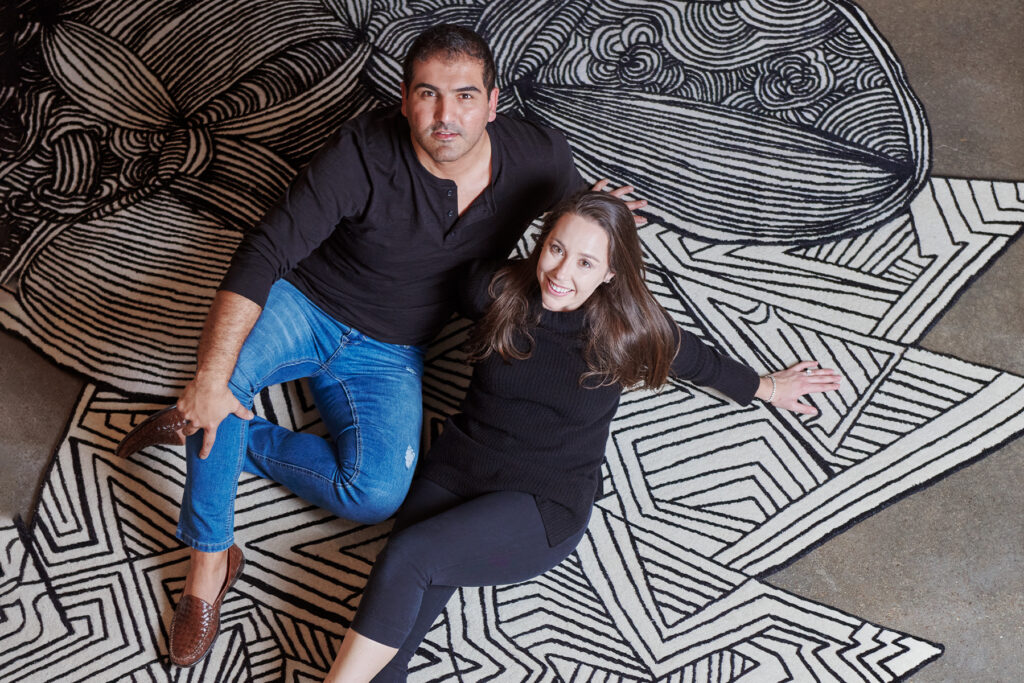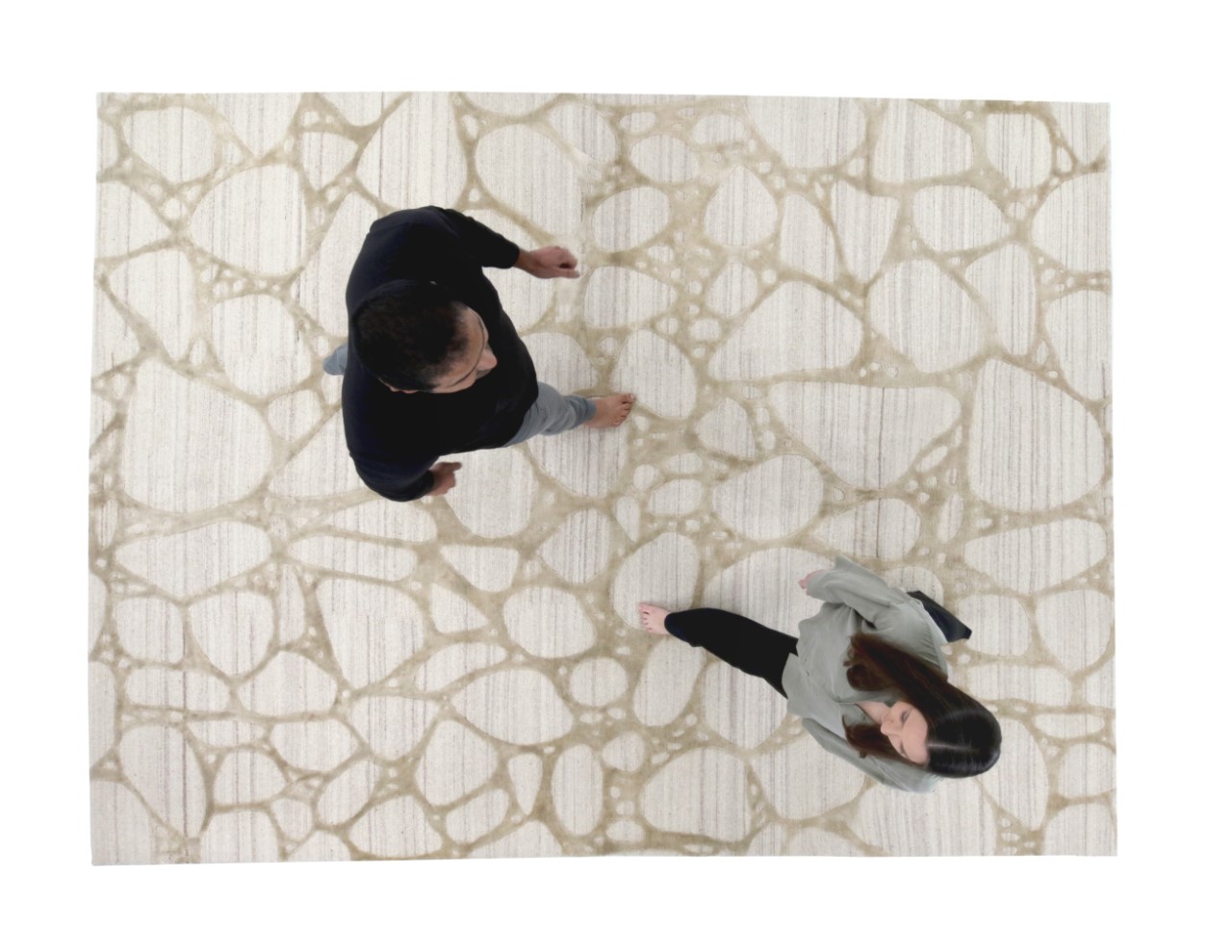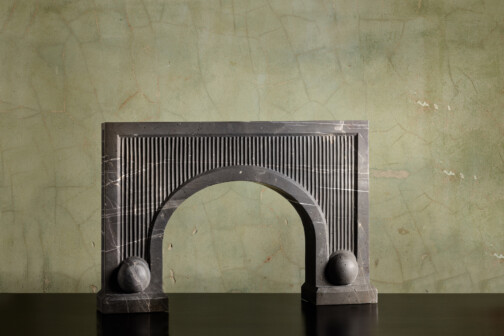Ashkan Agahzadeh has been around rugs his entire life.
A native of Tehran, Iran, Ashkan spent his childhood watching his mother and aunt spend years hand-knotting tapestries and carpets. He, along with his siblings and cousins, would run around the looms as their mothers worked with the threads. There’d be a large fruit platter, streams of tea, and free-flowing conversation. Periodically, the older generation would pause to show their children what they were doing, passing down not only the heirloom rugs but the intricacies of the art form itself.
The art of carpet making1 has existed in Iran for millennia. Persian carpets are known worldwide for their softness, quality materials, durability, complex knots, and stunning patterns. Growing up, Ashkan says many people had a loom in their house: “I saw people do it as hobby, like people do needlepoint at home.”
Just about everyone in Ashkan’s life was intertwined in the carpets. His mother weaved and his father worked in trading. When Ashkan wasn’t in school, his father would take him to the famous Grand Bazaar in Tehran and show him the rugs and traders until he became an expert in vintage carpets. “Just run your hand on a rug, and I know what city2 it comes from,” Ashkan says.
Ashkan moved to Los Angeles in 2000 and became a commercial real estate lawyer. He never gave up on his love of Persian rugs but says he was missing a muse. Enter: his future wife, Philippa.
An interior designer by trade, Philippa grew up in Sydney, Australia. She’d visit the sheep farms where her parents grew up, but she was a “city slicker” who loved the beach. In 2016, she and her mom visited L.A., where Philippa caught Ashkan’s eye one afternoon. They kept in touch, bonding over art. Philippa had already planned to move to the U.S. that October; they were married less than a year later.
Along the way, the pair relocated to Dallas and started a studio, called Atelier Agahzadeh, to create paintings, sculptures, and more. In 2019, when Philippa suggested they add hand-knotted rugs to their offerings, Ashkan—who jokes that every surface of their home would be covered in carpets if he had his way—jumped on the chance to get back into the business.
But taking a modern approach, they decided to update the traditionally busy designs while staying true to the soul of the practice.
Today, many of Atelier Agahzadeh’s rugs have calming, minimalist, and earthy patterns, which Philippa draws by hand in collaboration with Ashkan. Their carpets are inspired by elements in nature or moments in the couple’s lives—the Pebbles collection came from Philippa’s childhood on Australian beaches, and the labyrinthine Maz was inspired by ancient Persian architecture.
“One of the things that we tried was, instead of having the intricacy and complexity within the rug itself, to kind of make it work for the new environment of homes, to bring that outside. So you get complexity outside on the edges.”
Ashkan Agahzadeh
In addition to using a variety of materials—including jute, mohair, and Merino wool sourced from Philippa’s native Australia—they experiment with different pile heights and nontraditional jagged or organic borders to weave rugs their clients consider bespoke art.
“What really makes our hearts sing is when we get to create a really special organic piece that is bespoke to someone’s home and needs,” Philippa says.
While the couple show their offerings in Jean de Merry showrooms nationwide, every Atelier Agahzadeh rug is made-to-order in Nepal3. It takes months for a custom carpet to arrive—an 8-by-10-foot rug would generally take 10–12 weeks, Philippa says. They have 10 looms in Kathmandu, the largest of which—their biggest loom is 35-feet wide—are set up in outdoor structures. Every completed rug is hand-washed and laid out to dry on the roofs of local buildings. Depending on the season, this can draw out the time it takes for the rug to be ready even longer.
But Philippa and Ashkan aren’t in the business of rushing rugs. After all, Ashkan watched his mother spend nearly a decade knotting one tapestry. They, much like Persian tradition, are dedicated to creating heirloom art that will be passed on to future generations.
“Not only will you’ll be able to use it as a piece of art in your house, it’s going to last your lifetime,” Ashkan says. “It’s going to last your generation. You could pass it down and you could have a story with it that goes to your children.”









